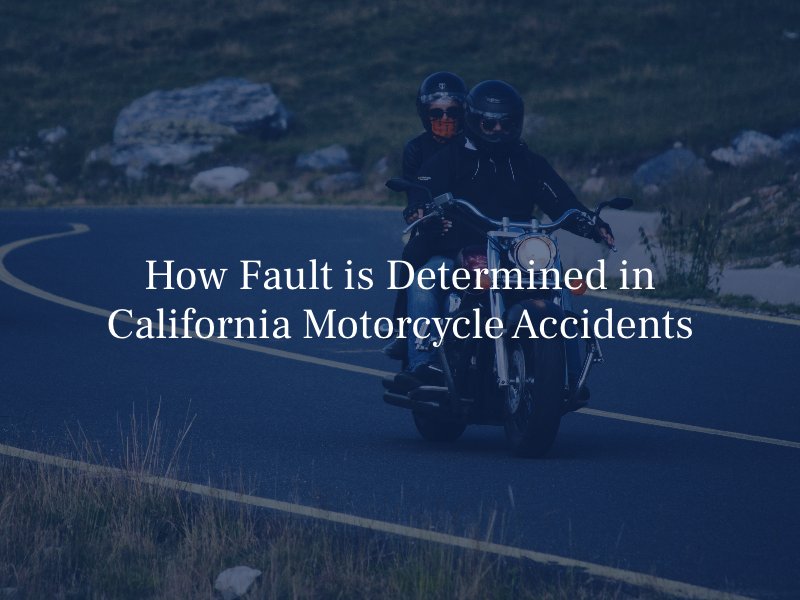How is Fault Determined in a Motorcycle Accident?
December 25, 2022 Posted In Motorcycle Accidents
When you are involved in a motorcycle accident in California, you must prove the collision was caused by another party for their insurance company to accept your claim and offer compensation. Here are the factors an insurer will consider when determining fault in a motorcycle accident.

The Police Report
A police report can be extremely beneficial in proving fault. It doesn’t always have the final say, but the officer’s information and opinion on who they believe caused the accident can carry a lot of weight in an insurer’s decision. For example, the officer will include the following:
- The final positioning of the cars
- The location and extent of damage to the vehicles
- Whether airbags deployed
- Whether there are skid marks from attempts to brake
- Interviews with the drivers
- Interviews with witnesses to the accident
- Whether either driver appears to be intoxicated
- Whether either car was malfunctioning
- Whether they viewed video footage of the accident
If one party is cited for a traffic law violation or charged with a crime (e.g., driving while intoxicated), this can serve as significant evidence of fault that is difficult to challenge. However, police officers can make mistakes, and drivers can lie. Therefore, insurers will also consider additional evidence, such as witness statements, video footage if available, the extent and where the damage is located on the vehicles, and more.
No-Doubt Liability Accidents
Fault for some motorcycle accidents is referred to as “no-doubt liability.” This means that due to the circumstances of the collision, a particular party is almost always to blame. For example,
- Driver in the Back: When a driver hits a motorcyclist from behind, fault typically falls on the driver in the back because it is assumed that they should have stopped in time and left more space between them and the motorcyclist.
- Left-Hand Turns: When a motorcyclist is hit by a driver making a left-hand turn, the driver is often considered at fault. This is because they are turning in front of oncoming traffic, so it is assumed that they did not enter the intersection with sufficient time and space to complete the turn.
- Backing-Up Drivers: In most cases, when a driver is backing up and hits a motorcyclist, liability will fall on the driver.
- Red-Light Runners: Drivers who run red lights are usually at fault in motorcycle accidents. However, if both drivers claim they had a green light, the insurance company must further investigate.
In these types of cases, it is very challenging for the at-fault party to argue liability, and claims are often quickly resolved in a settlement.
Comparative Negligence in Motorcycle Accidents
Since California is an at-fault state, the party that causes a motorcycle accident is responsible for damages. However, California also has a law known as pure comparative negligence, which applies to motorcycle accident cases. Under this law, each party involved is assigned a percentage of fault, but as long as you are not 100% to blame, you can recover compensation, but it will be reduced. For example, if you are awarded $100,000 but found 30% at fault for your motorcycle accident, you will receive 70% or $70,000. Additionally, if you are found 90% responsible, you will only recover 10% of your award, or $10,000, and so on. Therefore, it is critical to work with an experienced Motorcycle Accident Attorney in Riverside who can ensure that fault falls on the appropriate party.